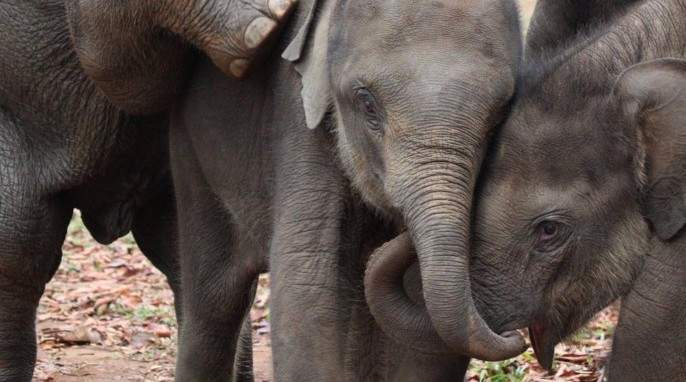Title: Bring Back the King: The New Science of De-extinction
Reviewed by: Steven Spence
Author: Helen Pilcher
Publisher: Bloomsbury (Sigma Series)
Best for: High school and up

Playing on both T. rex and Elvis Presley in the title and text, Helen Pilcher covers some serious, cutting-edge science in her breezily written book Bring Back the King: The New Science of De-extinction. Readers will be introduced to DNA, cloning, the use of CRISPR (Clustered Regularly Interspaced Short Palindromic Repeats) for editing DNA, and the limitations of various genetic techniques. Pilcher also introduces various species and discusses the challenges involved with bringing them back from extinction.
About the book
Serious science can always be presented in a dry, soporific manner. With comedic talent and an excellent understanding of the subject, Pilcher transforms complex information into a witty, accurate, easy-to-read book. She covers important topics concerning the preservation, recovery, and editing of DNA; the limitations of available techniques; and how scientists fill in gaps in genetic sequences. Pilcher also looks at exciting candidate animals, talks about groups working on those animals, and considers the ethics involved in bringing back an extinct species.
In a fun thought experiment, Pilcher discusses creating an Elvis clone. Even an exact clone would not be equivalent to Elvis due to epigenetics (environmental factors affecting gene expression) and cultural factors. GElvis, as she calls her hypothetical cloned Elvis, would grow up in a different culture and have very different life experiences from the original Elvis. GElvis might look like Elvis but wouldn’t be like Elvis.
In Bring Back the King, Pilcher covers real de-extinction efforts, too. It’s highly likely that in just a few years we will be reading about mammoths being successfully brought back from extinction. She examines the efforts of geneticists and ecologists to use DNA recovered from a Siberian mammoth to produce a mammoth-like elephant that can once again roam in Siberia. In the short term, the “neo-mammoths” would roam in a 14,000-hectare preserve called Pleistocene Park. Eventually, as numbers grow, they could roam through larger expanses of Siberia. Ecologists hope that over time the neo-mammoths would restore the tundra areas to grass-covered steppes, cooling the Earth by as much as 2°C. If you’re going to dream about herds of an animal the size of a mammoth, go big or don’t go at all.
RELATED: DID PLANT-EATING DINOSAURS HAVE CHEEKS?
The idea of neo-mammoths roaming Siberia sounds like Jurassic Park, but that was just Hollywood, right? How would that even be possible? DNA breaks down and becomes unusable after millions of years, so the Jurassic Park scenario of creating a T. rex using blood from a mosquito trapped in amber won’t work. (There may be other techniques leading to an eventual throwback pseudo-dinosaur.)
RELATED: WHY DO HUMANS HAVE THUMBS AND NOT FINS?
In the case of mammoths, well-preserved specimens from 40,000 to 50,000 years ago are available. The DNA has even been successfully sequenced. For cloning to succeed, scientists would have to recover a “living” (intact will suffice) cell. So far that hasn’t been the case with these carcasses. If cloning isn’t possible, then scientists can look at splicing mammoth DNA into cells of its closest living relative, the Asian elephant. This is where CRISPR and other genetic tools give scientists the possibility to create a “mammoth” embryo and then insert it into an Asian elephant to carry to term. A decade ago there were too many challenges for this to be realistic. With current technology, estimates are that we could have the first “mammoth” in as little as one year and almost certainly less than five years.
RELATED: ANOTHER EARLY TOOTHED BIRD RAISES ITS HEAD
In addition to Elvis, T. rex, and mammoths, Pilcher discusses Neanderthals, dodos, passenger pigeons, thylacines (zebra-striped, marsupial “Tasmanian wolves” that became extinct in 1936), rats, frogs, and bucardos (ibex) as possible cloning candidates. Some are more feasible than others, and some would have less ecological impact than others. Pilcher spends time discussing these aspects and the ethics of bringing these species back from extinction. After reading about passenger pigeons, I’m quite against the idea of bringing them back. Hitchcock’s The Birds might move from fiction to reality if they were restored in their former numbers. On the other hand, several frog species and the thylacines would be excellent choices.
Conclusion
I highly recommend Bring Back the King: The New Science of De-extinction. Pilcher covers genetics, DNA viability, de-extinction techniques, and multiple candidate species in an easy-to-read, witty manner. She reflects not only on what is possible but also on the ethics of what could be done. Her book is timely, as we can realistically expect some of these de-extinction efforts to create living examples of extinct wildlife within the next few years.




